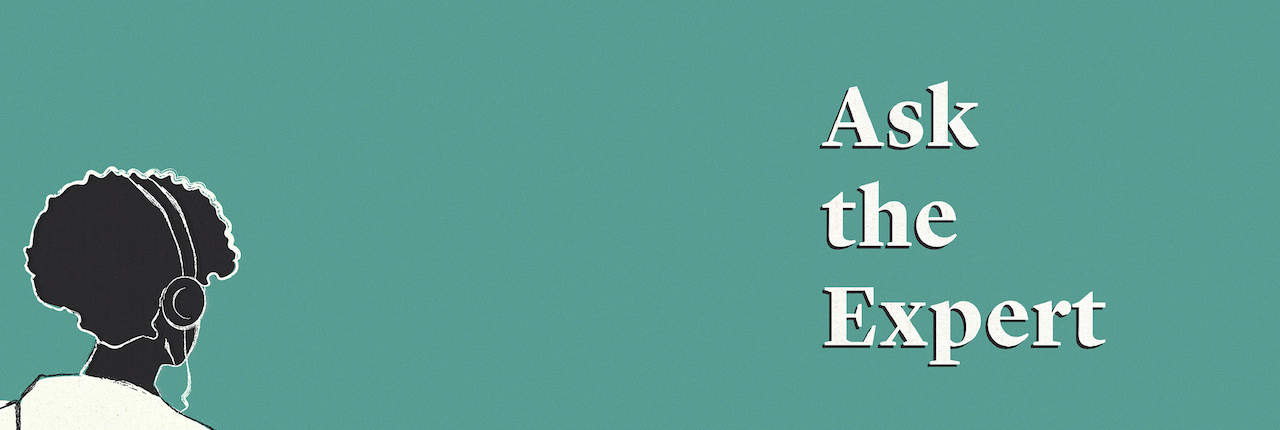Transcutaneous Spinal Stimulation
November 8, 2024
In this “Ask the Expert” episode, Dr. GG deFiebre of SRNA was joined by Dr. Rebecca Martin, who detailed the mechanism and benefits of transcutaneous spinal cord stimulation (TSS). Dr. Martin explained how TSS, a non-invasive method, aims to amplify spinal cord excitability and improve neurological functions like movement and sensation [00:01:25]. She contrasted TSS with implanted spinal stimulators, noting their respective applications and advantages [00:02:34]. Dr. Martin shared the promising outcomes of TSS in clinical trials, emphasizing its potential for widespread clinical use, and she urged patients to inquire about it at their clinics [00:05:42]. You can read her group’s recent paper, “Transcutaneous Spinal Cord Stimulation Enables Recovery of Walking in Children with Acute Flaccid Myelitis”, here.
Transcript
[00:00:02] Dr. GG deFiebre: Hello and welcome to the SRNA Ask the Expert podcast series. This episode is titled Transcutaneous Spinal Stimulation. My name is GG deFiebre, and I moderated this episode. SRNA is a nonprofit focused on support, education, and research of rare neuroimmune disorders. You can learn more about us on our website at wearesrna.org. Ask the Expert is sponsored in part by Amgen, Alexion AstraZeneca Rare Disease, and UCB.
[00:00:30] For this episode, we are pleased to be joined by Dr. Becca Martin. Dr. Martin joined Kennedy Krieger in 2005 as a senior occupational therapist in the International Center for Spinal Cord Injury. Since 2010, she’s been the manager of Clinical Education and Training at the International Center for Spinal Cord Injury, and is responsible for program development, staff training, and oversight of the Clinical Research Program. You can view her full bio in the podcast description.
[00:00:57] Thank you for joining me today to talk about this research. To start, can you just say what electrical stimulation is?
[00:01:07] Dr. Rebecca Martin: Sure. So, electrical stimulation is a category of intervention that involves using electricity to drive a therapeutic response. So, sometimes we use it for pain management, for swelling, for muscle strengthening, and in our more recent applications, to improve neurological function.
[00:01:24] Dr. GG deFiebre: Got it. So, what is transcutaneous stimulation? Is that just like a type of stimulation?
[00:01:31] Dr. Rebecca Martin: So, transcutaneous spinal cord stimulation is the delivery of stimulation across the surface of the skin to increase excitability in the spinal cord. The prevailing thought is that we are accessing the dorsal roots. So, these are nerves as they’re entering the spinal cord, right? Your nervous system carries sensory information from motion, touch, sensation, different sensation, and it carries it back into the spinal cord.
[00:02:02] And so, right as it enters the spinal cord, if we amplify the volume of electricity that’s being carried by those nerves, it changes the excitability inside the spinal cord. It’s not dramatically different than FES or NMES or even TENS that people might be more familiar with, but we’re able to manipulate the waveform a little bit so that it specifically targets the spinal cord.
[00:02:34] Dr. GG deFiebre: There’s also been, I know I’ve seen some news articles, and people may have been familiar with, like, actually implanted spinal cord stimulators. How is this similar, different, mind just talking a little bit about that?
[00:02:48] Dr. Rebecca Martin: Obviously, the big difference is the implanted stimulators go inside the spinal canal, right? So, it involves an operation. There’s a small flexible electrode that gets sort of thread into the space between the spinal cord itself and the vertebrae.
[00:03:07] Whereas the transcutaneous stimulation is just across the surface of the skin. So, we use adhesive electrodes, just like you do for the FES bike or any of your NMES applications, but they go on the spinal cord, like, over the spinal cord itself. The principle is the same. In both cases, we’re looking to increase the excitability of the spinal cord to unmask latent voluntary functions.
[00:03:34] So, those are hidden functions that are conducted in your nervous system but at a volume that’s not quite loud enough for the muscles to hear. So, the stimulation amplifies the volume on those connections. The spinal cord stimulation tends to be a little bit more — the implantable is a little more specific and is used more consistently, more like an orthotic so that you use it all the time when you’re moving around. Whereas the transcutaneous, the idea is that we can charge up the nervous system, train on top of it, and then make more durable changes to your function.
[00:04:16] Dr. GG deFiebre: So, where in the spinal cord is this transcutaneous spinal stimulation done? I know you mentioned that the electrode kind of goes directly over the spinal cord. Does this happen in the neck, lower in the back, or maybe depending on where people might have damage in their spinal cord?
[00:04:32] Dr. Rebecca Martin: So, we can stimulate at multiple sites. Generally, there’s sort of two enlargements in the spinal cord anatomically, right? There’re two areas where the spinal cord gets a little bit thicker, where there’s sort of a confluence of nerves that are coming together and headed back out. So, those tend to be our targets. One is in the cervical in the neck, sort of between C5 and C6, and one is lower down in the back, between T10 and T11, but different groups are studying different locations.
[00:05:09] So, I’ve read some papers where they line electrodes down the whole back. I’ve read papers where they’re doing just two electrodes in the neck or two electrodes on the back. We do one electrode on the neck and one electrode on the back. So, that’s one of the questions we don’t quite know yet. Is it just at these areas of enlargement? Is it above and below the level of your injury? Is it… Does it matter? I don’t know the answer yet.
[00:05:41] Dr. GG deFiebre: Has this been studied in people with just traumatic spinal cord injury, or maybe have a spinal cord injury from something other than just inflammation, like the rare neuroimmune disorders, or has this also been studied in people with damage to the spinal cord from things like transverse myelitis, or spinal strokes, or neuromyelitis optica, or MOG antibody disease, any of those things?
[00:06:08] Dr. Rebecca Martin: Most of the papers to date have been in traumatic injuries – car accidents, sports injuries, even some surgical types of injuries, but where there is trauma to the brain — spine rather, and mostly in incomplete injuries. So, that is people who have some sparing across the level of the injury. My group published last week actually a paper on looking at TSS in kids who have acute flaccid myelitis.
[00:06:39] So, in that category of myelitis-y inflammatory diseases, and we showed that those kids had good changes, and they were able to recover walking. So, it’s coming. The more we’re able to, you know… Research always starts with the most predictable, most tightly controlled studies because we need to show it works so that we can get more money, so we can study it in other people. But it’s starting to expand into non-traumatic injuries, inflammatory conditions, even some autoimmune kinds of things like multiple sclerosis.
[00:07:16] Dr. GG deFiebre: I was going to ask separately about AFM because some things are a little bit different in terms of where in the spinal cord, you know, where the damage occurs —
[00:07:28] Dr. Rebecca Martin: Actually, in our clinical experience, patients with transverse myelitis have a really good response to TSS. So, one of the hard things about acute flaccid myelitis, even some transverse myelitis, right, is like, where exactly is the damage, the relation of the dorsal and ventral, the back and front parts of the cords, and how those are still communicating, how and if those are still communicating with each other, and the fact that your sensation can be absent or patchy or hypersensitive.
[00:08:04] And so, for the acute flaccid myelitis kids, they have normal sensation for the most part, and the stimulation is not super comfortable. But people with transverse myelitis who have a more single level or even if it’s over a few levels, it’s a more predictable kind of injury pattern. We just know more about it than we know about AFM, and so those patients actually have a really good response.
[00:08:32] Dr. GG deFiebre: What are the benefits of transcutaneous spinal stimulation? What does it do? Do people have increased sensation, movement, both, how does it impact spasticity? Do you mind just talking about some of the benefits?
[00:08:46] Dr. Rebecca Martin: Yes. So, I have been a therapist for 20 years now, and transcutaneous spinal cord stimulation is the first intervention where within a single session, I am able to change a patient’s function. And it just, every time I see it, I am shook every time that patients go from not moving to moving. They go from no sensation to sensation. So, for example, I have patients who really can’t move, but we suspect there’s a flicker of something.
[00:09:26] Or in EMG, we’re seeing some activity, but it’s not enough activity to make the patient move against gravity. We put TSS on, and they are able to move against gravity. So, we’ve seen changes in motor function and control. We’ve seen normalization of spasticity, which means both if you have high tone, it brings it down, and if you have low tone, it brings it up so that it’s more normal, right?
[00:09:51] This is one of the really exciting things about TSS is that it engages the nervous system in a way that we haven’t been able to do before, sort of harnessing the nervous system’s own power to get done what we’re asking it to do. I have patients with really high-level injuries who sort of report that they roll around feeling like a bobblehead.
[00:10:14] As soon as we put the TSS on, they’re like, oh, I’m able to feel the mat beneath me. I’m able to feel my legs. I feel like my legs can accept more weight when they’re in a supported standing position. I have patients who have been in some of our studies where we’re really looking just at motor and sensory changes, and they’ll come back and report to me that they’ve had changes in their bowel and bladder function, right?
[00:10:39] So, the return of voluntary voiding, the increase in sensation, all of these things really contribute to this change in quality of life, which as an OT is what I’m after, mostly, is that I want you to live better, more fuller, engaging ways. And the TSS is really the first time that I’ve seen within 15, 20 minutes, 60 minutes that I can change somebody’s function, and it’s super exciting.
[00:11:08] Dr. GG deFiebre: Well, I remember kind of early on too, there was worry about actually putting stimulation on the spinal cord. And then I guess the thought of that has changed over time as knowledge evolves. So, it’s really cool that it’s a new, you know? Yeah.
[00:11:23] Dr. Rebecca Martin: Yeah, it’s wild to me how fast it’s changing too because when I started here at Kennedy, there were hospitals that had a policy, they wouldn’t stim muscles that did not move on their own. And so, to me I was like, well, what’s the point? Like, the whole point of stimulation is to make somebody move who can’t move on their own.
[00:11:43] Now, the thing that TSS does is different. So, right, if I put stimulation on your bicep, for example, I can make your bicep contract, but you don’t have control over that. I’m just going to take you through that motion. I always say that electricity is sort of dumb, right? It’s going to get the biggest, easiest-to-recruit motor units, but those motor units are also the first to fatigue.
[00:12:06] And so, while I can substitute for your lack of elbow flexion, it’s not normal. It’s not anywhere close to normal, and it’s wrought with all kinds of problems. But if I put TSS on your neck and then I ask you to flex your elbow, you can now do it. So, it’s under your volitional control. It has more normal motor recruitment patterns, and then we’re getting the information back from the sensory fibers, from the muscles, from the tendons that say, okay, we did it.
[00:12:38] That ascending information combines with your descending information to make a more normal nervous system. Ultimately, the body wants to be whole. The body wants to function in a way in which it was intended, but our more traditional models of rehab where we teach you how to compensate actually does the nervous system a disservice because it goes quiet.
[00:13:05] Dr. GG deFiebre: Exactly. So, you mentioned that people have regained some movement, sensation, normalizes spasticity. Does this happen just in people who have an incomplete injury or also incomplete, or how — do people already have to have some movement already? Where are you seeing these benefits?
[00:13:25] Dr. Rebecca Martin: Yeah, so, I’ve seen… Clinically, I have seen these benefits in both complete and incomplete patients. Most of the research is concentrated in incomplete patients, that’s, again, because we need to have something to measure to start with. We need to be more sure that it’s going to work so that we can get more money and study it in other people.
[00:13:46] But, clinically, we’re trying it on lots of patients. What we’re discovering is that our ISNCSCI exam – the ASIA exam with the light pins and the cotton swabs, and we test all your muscles, and your sensation – is really very imperfect, right? We kind of already knew this, but first of all, it ignores all the muscles from here to your hips. And particularly in patients with neuroimmunological and rare neurological diseases, there can be variability day to day. And so, you don’t necessarily always have the same presentation. It kind of depends on what you’re seeing in that moment.
[00:14:30] So, the idea that somebody has a truly complete injury is false in most cases. Unless we’re talking about a penetrating trauma, it’s really hard to come up with a truly complete injury. And so, what we’re finding is that in some cases, when we put the TSS on and we unmask this additional function, patients who are complete are not. They’re moving way below the level of injury.
[00:15:01] And so, we’re calling these patients dis-complete or, I don’t know. I kind of hope we get away from this idea of complete injuries, and we just give letter grades, right? So, we know more or less complete, but nobody is truly all the way complete. I’ve wandered on this tangent about the ISNCSCI exam, but the TSS works in lots of patients. It works in patients who have both flaccid and high tone. It works in patients who have normal and decreased and increased sensation.
[00:15:42] It works in patients who — another thing that’s wild to me is sometimes we’ll put it on the neck because we’re after some upper extremity function, and we’ll see their feet moving, right? And so, it’s this idea that the nervous system is this whole continuous, somebody explained it to me like a piano, right? There’s a whole range of activity, a whole range of notes in your nervous system, and I want the whole thing to talk to each other. I want pretty music, not just one end.
[00:16:16] Dr. GG deFiebre: We talked about the benefits, are there any risks to transcutaneous spinal stimulation? Are there any contraindications or anything like that?
[00:16:26] Dr. Rebecca Martin: So, all the contraindications to electrical stimulation holds. So, no open wounds where we need to put electrodes, no active bleeding disorders, no active cancer diagnosis, no pregnancy, no uncontrolled seizures. The only adverse event that we have seen in any of our research is skin irritation, right, which is consistent with other forms of electrical stimulation. And most of that is temporary and transient.
[00:16:58] There is the risk of autonomic dysreflexia. There is the risk of changes in spasticity that might not be super helpful for you. So, in some cases, we’ve seen patients who, for example, use their spasticity to stand, they use their stiffness to stand, and we take away that stiffness with the stimulation and then they’re frustrated because they feel like they’re moving backwards.
[00:17:29] But sometimes that’s necessary to get to the point where you have more control over that stand function. Some patients report urgency in bowel and bladder and therefore more frequent accidents. But most of, again, those changes are temporary and sort of just in a transition phase as you get used to the stimulation.
[00:17:51] Dr. GG deFiebre: What about things like a baclofen pump or a pain pump? Does that have an impact on the stimulation?
[00:17:58] Dr. Rebecca Martin: So, medication pumps are fine, baclofen or if you have a pain medication pump. We have stimulated patients with diaphragmatic pacers also. All of those systems are closed systems, so they don’t interact with the stimulation. If somebody has a spinal cord stimulator for pain, that has to be turned off during TSS. The other thing, cardiac pacemakers, or cardiac defibrillators, really, which have a sensing capacity, and vagal nerve stimulators are the two that we cannot stimulate in combination.
[00:18:42] Dr. GG deFiebre: Is this currently being researched or where is it being researched? If it is, how can someone maybe get involved?
[00:18:52] Dr. Rebecca Martin: So, the studies we’re running here, so you can find our studies on our website, which is kennedykrieger.org. We are a part of the ASPIRE trial, which is sponsored by ExaStim. So, you can go to their website also and find enrollment information, and there are 14 different sites currently enrolling for the ASPIRE study. So, you might find a site closer to you than Baltimore.
[00:19:21] And there are some other companies that are developing stimulators, Onward and SpineX, that are looking at these applications in different populations, kids, adults, and all the things. But I generally direct patients to clinicaltrials.gov or scitrialfinder.org, which will have sort of vetted spinal cord specific studies. And clinicaltrials.gov will give you all kinds of studies, but you can put in spinal stimulation as your search criteria and get studies that do those.
[00:20:04] And then people can just reach out to me if they really are stuck and need some input. That’s in terms of research. There are centers like ours that are starting to implement TSS as part of their clinical program. I’m hard pressed to find a patient who I would not try TSS with at least. When I teach courses, I remind therapists that it’s like five more minutes of setup and has the potential to really augment and amplify both the therapist effort and my patient’s effort. So, if I can supercharge my 60 minutes, I’m going to do it.
[00:20:45] Dr. GG deFiebre: I was going to ask, is this something that can be done — obviously, it’s being researched with certain, I’m sure, parameters. Is this something that can be done in the clinic or also potentially at home if someone has a home program?
[00:20:59] Dr. Rebecca Martin: Yeah, so, we’re still exploring the different parameters and protocols and exactly what’s the best answer. We have good answers right now. I don’t know if they’re the best answers. So, that’s sort of the qualifier I always put out for patients.
[00:21:18] We know this is super safe. We know this is super easy add-on to what you’re already doing. When patients come here to Kennedy Krieger, they receive a comprehensive evaluation, where we look at all of their potential risks and benefits, and then we make decisions about what part of their treatment plan TSS could play. In some cases, that’s clinically useful during walking practice, for example, or during upper extremity tests.
[00:21:49] And there are instances where we send patients home with TSS and in combination with what they’re doing at home, FES biking, and standing, and walking, and upper extremity practice. So, all of those things. I know we’re one of very few centers that are using it clinically already, but I think it’s going to move pretty quickly because it is so safe and so easy.
[00:22:18] Dr. GG deFiebre: This is really cool and thank you for sharing all this. Is there anything else you want to add that I haven’t asked about or any kind of final thoughts?
[00:22:28] Dr. Rebecca Martin: No, like I said, I’m super excited about TSS and sort of where it has the potential to go. And I feel like it’s, again, the first time in 20 years that I can offer to patients, like, something that’s going to make a change. How durable that change is, what the magnitude of that change is, and if we can make that change better, faster, more with different parameters is what we’re still trying to figure out. That’s what sort of drives me in my research.
[00:22:53] I think what I would encourage patients to do is just ask for it. When you show up to your clinic, you should ask them about it. If they don’t know, then you point them to the papers. And if they still don’t know, then you point them to me, and I will help them figure it out. If they say no, then you come to Baltimore, and we’ll figure it out for you. But patients are their own best advocates, and so I’m always happy when somebody shows up and says, I want to try this.
[00:23:21] Dr. GG deFiebre: Great, thank you so much. I really appreciate it.
[00:23:24] Dr. Rebecca Martin: Of course. Thanks for having me.
[00:23:32] Announcer: Thank you to our Ask the Expert sponsors, Amgen, Alexion AstraZeneca Rare Disease, and UCB. Amgen is focused on the discovery, development, and commercialization of medicines that address critical needs for people impacted by rare, autoimmune, and severe inflammatory diseases. They apply scientific expertise and courage to bring clinically meaningful therapies to patients. Amgen believes science and compassion must work together to transform lives.
[00:24:04] Alexion AstraZeneca Rare Disease is a global biopharmaceutical company focused on serving patients with severe and rare disorders through the innovation, development, and commercialization of life-transforming therapeutic products. Their goal is to deliver medical breakthroughs where none currently exist, and they are committed to ensuring that patient perspective and community engagement are always at the forefront of their work.
[00:24:30] UCB innovates and delivers solutions that make real improvements for people living with severe diseases. They partner with and listen to patients, caregivers, and stakeholders across the healthcare system to identify promising innovations that create valuable health solutions.
LISTEN & SUBSCRIBE
TO PODCAST
DOWNLOAD MP3
DOWNLOAD TRANSCRIPT











